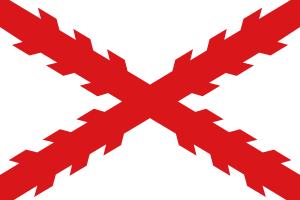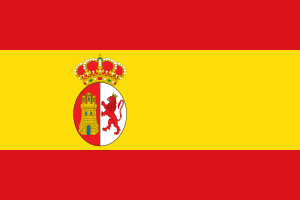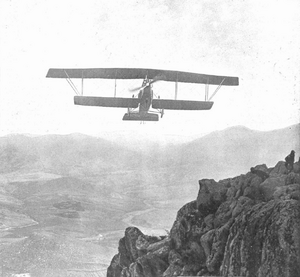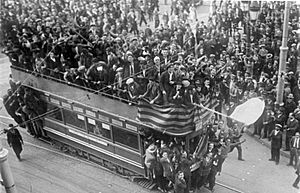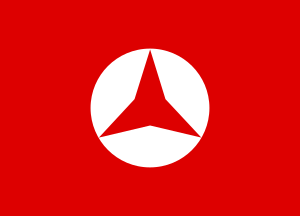Ignacio Hidalgo de Cisneros facts for kids
Quick facts for kids
Ignacio Hidalgo de Cisneros
|
|
|---|---|
 |
|
| Birth name | Ignacio Hidalgo de Cisneros |
| Born | 11 July 1896 Vitoria, Spain |
| Died | 9 February 1966 (aged 69) Bucharest, SR Romania |
| Buried |
Bellu Cemetery
|
| Allegiance | |
| Service/ |
Spanish Republican Air Force |
| Years of service | 1911–1939 |
| Commands held | Air Forces of the Spanish Republic |
| Battles/wars | Riff War Spanish Civil War |
| Spouse(s) | Constancia de la Mora |
Ignacio Hidalgo de Cisneros (born July 11, 1896 – died February 9, 1966) was a Spanish military pilot. He is famous for leading the Spanish Republican Air Force during the Spanish Civil War. He was also one of the few noble people who joined the Spanish Communist Party. He wrote books about his war experiences in the 1960s.
Contents
Early Life and Dreams of Flight
Ignacio Hidalgo de Cisneros came from a very old and important Spanish noble family. His ancestors were well-known in Spanish history. His great-great-grandfather, Francisco Hidalgo de Cisneros, was a military general. Ignacio's great-grandfather, Baltasar Hidalgo de Cisneros, became a very important leader in South America.
Ignacio's grandfather, Francisco Hidalgo de Cisneros y Gaztambide, was also a soldier. He supported the Carlists during the First Carlist War. The Carlists were a group who believed a different royal family member should be king. Ignacio's father, Ignacio Hidalgo de Cisneros y Unceta, also joined the Carlists. He even became a bodyguard for their leader.
Ignacio grew up in a very religious home in Vitoria, Spain. Carlist soldiers often visited his family's house. When he was a child, he saw early airplanes flying near Vitoria. He was amazed and dreamed of flying himself.
At age 7, Ignacio's father passed away. He went to school in Vitoria. In 1910, he joined a military school, wanting to become an officer and a pilot. He found military discipline difficult at first. He later finished his studies in Madrid.
Flying for the King
After his military training, Ignacio joined a school in Ávila in 1912. This was a step towards his dream of flying. He first worked in the army's supply department in Andalusia. He enjoyed his life as a young officer.
He volunteered to serve in Spanish Morocco between 1917 and 1919. There, he worked in logistics, helping to supply the army. When the Spanish army started formal flight training, he joined. In 1919-1920, he completed his flying courses at the Cuatro Vientos Airport. He became part of the new Spanish military aviation.
Soon after, he returned to Morocco. He was based in Melilla and flew his first combat missions. He quickly became skilled in flying for scouting, bombing, and transport. In the early 1920s, he was a flying instructor. He was promoted to captain and then major. He took part in all the main battles of the Rif War. After the war ended in 1925, he became the deputy commander of the aviation school in Alcala de Henares.
In 1927, Ignacio was made "Commander of Air Forces in the Spanish Sahara." He had only 10 airplanes. His job was to keep local tribes in check and oversee postal services. He also flew to map the area and ensure the safety of French flights. These flights used Spanish airfields to refuel. He also dealt with the local people, sometimes acting like a diplomat.
Ignacio was not very interested in politics back then. He had left behind his childhood Carlist beliefs and his faith. He saw himself as a loyal Spaniard serving his king and country. He was upset by the British presence in Gibraltar. During the First World War, he supported the Central Powers. He wanted to defend Spain's honor after the Battle of Annual. He did not mind when Miguel Primo de Rivera took power, ending the liberal democracy. He later respected Primo de Rivera's military skills.
Supporting the Republic
By the late 1920s, Ignacio became more critical of Spanish politics. He was annoyed by the praise for Primo de Rivera and the military's problems. He also disliked the power of the Church and the big gap between rich and poor.
He became friends with other pilots who opposed the government, like Ramón Franco. He grew to dislike the monarchy and King Alfonso XIII. Ignacio openly shared his views and even caused small protests in his unit.
While on leave in Madrid, Ignacio accidentally got involved in a plan to overthrow the government. He spoke out against a royalist, which led to an invitation to join the plot. He didn't know the plan was not well organized. To his surprise, he became one of the leaders of the coup.
On December 15, 1930, he and others took control of the Cuatro Vientos Airport. He flew over Madrid, dropping leaflets to start a general strike. But the city did not react, and government troops arrived. He quickly fled to Portugal.
He then moved to France, where he met Spanish politicians in Paris. He became good friends with Indalecio Prieto. When the monarchy fell in April 1931, Ignacio returned to Madrid. He was seen as a hero. He was given back his old job at Alcala de Henares and soon became commander of the unit.
As Spanish politics became more divided, Ignacio blamed the Church, royalists, and rich landowners for the violence. This made most of his family turn against him. Around this time, he fell in love with Constancia de la Mora. She was also from a noble family but had more radical political views. After they married in 1933, Ignacio was sent as an air attaché to Rome and Berlin.
A New Political Path
Before his diplomatic mission, Ignacio helped plan to remove officers who supported the monarchy. He was disappointed when the government did not follow his advice. He did not like representing a government he felt was anti-democratic. He supported the Asturian miners' strike of 1934. He saw it as a response from working people against powerful forces.
Later that year, he helped Indalecio Prieto escape the country. He drove the socialist leader in the trunk of his car almost to the French border. After visiting Nazi Germany, he met the imprisoned Manuel Azaña. He told Azaña about the cooperation between Spanish right-wing groups and the Nazis. He was disappointed by Azaña's reaction.
In the summer of 1935, Ignacio asked to be recalled from Rome. He was assigned to the General Staff's mapping section. He would openly display a socialist newspaper there. Later that year, he was sent to the Seville air base, which was known for its royalist military presence.
After the Popular Front won the elections, Ignacio became an assistant to the new head of the Air Force. He again made a list of officers to be removed, but his advice was not followed. In early 1936, he tried to prevent a military rebellion. He organized a special service based on socialist and communist networks.
When the rebellion actually happened, the head of the Air Force was captured and killed. Ignacio tried to coordinate the air forces. In September 1936, Indalecio Prieto, the new defense minister, made him head of the Air General Staff. This meant he was the commander of the Fuerzas Aéreas de la República Española.
In his first months, Ignacio moved planes between airports to focus on key rebel routes. He tried to organize supplies and make up for lost pilots. Many pilots had joined the rebels. Even as commander, he flew combat missions himself. In late 1936, he oversaw the arrival of Soviet planes and airmen.
He became frustrated by the lack of order among the Republicans. He blamed the anarchists for disorganizing the military effort. He also blamed the socialists for not confronting them. He didn't know much about communist ideas. But he liked the Communist Party for its discipline and military help. He was also impressed by the Soviet Union's support. Because of this, Ignacio Hidalgo de Cisneros joined the Spanish Communist Party in late 1936.
Life After the War
The Air Force was the part of the Republican army most influenced by the Soviets. As head of aviation, Ignacio was supported by the Russians. They saw him as someone who could help them control the People's Army. The Republican air force, called "La Gloriosa," was actually run by the Russian air attaché. He thought Ignacio was dedicated but not very good at his job. Ignacio seemed to accept his role as a Soviet assistant. He was often not fully informed about the air force's operations.
Ignacio remained loyal to the Soviets. He supported adding political officers to the army. In December 1937 and November 1938, he traveled to Moscow. The first time was for medical treatment. The second time, he was a special envoy for Juan Negrín. He met Stalin and was impressed by him. Stalin agreed to send the supplies they needed.
In September 1938, Ignacio was promoted to general. After the fall of Catalonia, he stayed briefly in France. Then he returned to the Republican zone. He refused to join a coup against the government and stayed loyal to Negrín. On March 6, 1939, he left Spain, flying from Elda to Toulouse.
At some point in 1939, Ignacio moved from France to the USSR. His exact activities there are not clear. Some say he worked in the aviation industry. He was reportedly offered a general's rank in the Red Army but declined. Before 1941, he moved to Mexico via France. In June 1942, he wrote in a US communist magazine, asking for a second front to be opened in Europe.
He lived in Mexico City and reunited with his wife. Through her contacts, he met famous people like Eleanor Roosevelt and Bette Davis. He became friends with writers like Pablo Neruda and Ernest Hemingway. He faced financial difficulties. He was offered a job as a horse riding instructor in a US college. But as a communist activist, he was denied a residence permit. Some sources say he turned down the offer himself. Facing money problems, he decided to return to Europe. He used the Communist Party network in France to arrange to live behind the Iron Curtain. In 1949 or 1950, he settled in Warsaw, Poland.
In Warsaw, Ignacio worked for the Spanish section of the Polish Radio. He also started writing his memoirs. He lived in a comfortable apartment and was paid well. He was the most important person among the Spanish Republican exiles there. He was also celebrated by Polish fighters who had been in the International Brigades. In 1954, he was elected to the Communist Party's Central Committee.
In 1959, he was supposed to return to Mexico, but the plan did not work out. He was allowed to return to Warsaw and received a good pension. The first part of his memoirs was ready. It was edited by Spanish staff of Radio España Independiente, which had moved from Moscow to Bucharest in 1955. In 1961, he traveled to Romania to finish the book. He received special treatment and stayed in a luxury spa.
In Romania, Ignacio met other Republican exiles. He became good friends with Luis Galán. Galán suggested he move to Romania permanently, and Ignacio liked the idea. He had not felt well in Poland, disliking the cold climate and flat countryside. In late 1962, he moved to Bucharest, Romania.
In his last years, Ignacio continued working on the second volume of his memoirs. He also gave talks on Radio España Independiente. His memoirs were published in Poland and France in the early 1960s. In 1965, he traveled to East Berlin. He gave a lecture to the East German air force about Republican aviation. He also accused a German general of serious actions during the Spanish Civil War.
Before boarding his plane back, he had a heart attack. He recovered partly and returned to Bucharest. There, he suffered another, fatal stroke. Ignacio Hidalgo de Cisneros was buried in the Bellu Cemetery with full Romanian military honors. His grave was covered with many red flowers from communist authorities and other groups. No Catholic priest was present. Since he had no children, other family members came from Spain. The second volume of his memoirs was published after his death that same year. His remains were re-buried in his family's grave in Vitoria in 1994.
See also
 In Spanish: Ignacio Hidalgo de Cisneros para niños
In Spanish: Ignacio Hidalgo de Cisneros para niños
- Spanish Republican Air Force
- Spanish Communist Party
- Spanish Civil War
- Constancia de la Mora


